Neapolitan Food Dishes: Basic Overview
Common Ingredients
Common Cooking Methods
Courses
Meals
Key Taste
Eating Etiquette
Meal Presentation
Culinary Festivals
Influence and Fusion
Popular Types of Neapolitan Dishes
-
Bread and Doughs
Naples is home to many world-famous pizza varieties.
Pizza in Naples has a thin base, which is slightly puffy and charred around the edges, and simple yet delicious toppings.
Sweet bread and savory turnovers are also popular in Naples.
-
Casseroles and Bakes
Casseroles and baked dishes make up a significant part of Neapolitan cuisine.
These dishes are often made with meat or seafood, vegetables, and dairy products.
Such dishes are popular options for the main course of Neapolitan meals.
-
Cakes and Pastries
There are many types of cakes and pastries in Naples.
These dishes are usually made with wheat flour, milk, butter, sugar, dried fruits, and spices.
Many Neapolitan cakes and pastries are specifically designed for special holidays and occasions.
These dishes also serve as desserts and snacks in Neapolitan cuisine.
Neapolitan dishes are food offerings widely prepared and enjoyed in Naples, the capital of the region of Campania in Italy. These dishes display many characteristics found in Italian specialties.
Neapolitan dishes mostly utilize fresh and locally sourced ingredients, including seafood, vegetables (especially tomatoes), cheese, and herbs. These ingredients are of high quality and play an important role in building the reputation of local fare as simple yet tasty food.
Pasta and pizza are among the most famous specialties in Naples, but there are many other types of dishes worth discovering. I will provide you with informative facts about traditional Neapolitan food, including its traits, global popularity, and healthy aspects.
Next, I will delve into the most popular 18 dishes from Naples. You will also learn about the general features of Neapolitan cuisine and recommended beverages for serving alongside local dishes.
18 Most Popular Neapolitan Dishes with Filters
Keep on reading to discover 18 excellent dishes in Naples. I have ranked these options in order of popularity for your ease of reference.
You can also filter my list according to alphabetical sorting, main ingredients, taste, cooking methods, dish types, courses, and global popularity.
From traditional specialties to street food delights, the advanced filters will help you learn about them all!
Neapolitan Pizza
- Street Food
- Traditional
Neapolitan pizza, locally known as pizza napoletana, is among the most popular pizza varieties. Inspired by traditional flatbreads, it was invented in the 18th or 19th century in Naples.
As a type of thin-crust Italian pizza, traditional Neapolitan pizza consists of only tomatoes, mozzarella, and fresh basil. Some modern versions feature additional ingredients like anchovies, capers, and olives.
Pizza napoletana is famous for using simple yet high-quality and locally sourced ingredients. Only San Marzano and Pomodorino del Piennolo del Vesuvio tomatoes and mozzarella made with Campania buffalo or cow milk are acceptable for true Neapolitan pizza.
Naple-style pizza has long enjoyed widespread popularity and recognition. For example, UNESCO recognized the art of making Neapolitan pizza as an Intangible Cultural Heritage list in 2017.
Pizza Margherita
- Street Food
- Traditional
Pizza Margherita, also known as Margherita pizza, is a classic thin-crust pizza in Naples. It features the three colors of the Italian flag: white mozzarella, green basil leaves, and red tomato sauce (ideally made from crushed San Marzano tomatoes).
The famous Neapolitan pizza maker Raffaele Esposito reportedly created pizza Margherita in 1889 to honor Queen Margherita of Italy during her visit to the city.
However, the name Margherita only started becoming popular in the 1930s – 1940s, not to mention that Neapolitans had made pizza with tomatoes, basils, and thinly sliced mozzarella long before Queen Margherita’s visit.
Whatever the truth may be, the name pizza Margherita still stands to this date. This simple yet delicious pizza is available throughout Italy as well as all over the world.
Spaghetti alle Vongole
- Traditional
Spaghetti alle vongole is a classic Neapolitan pasta dish widely enjoyed in Campania and Italy. Literally “spaghetti with clams,” it combines tender clams with al dente spaghetti in a garlic-infused white wine sauce.
There are two ways of preparing the sauce for this Neapolitan pasta specialty: in blanco (making the sauce with garlic, extra virgin olive oil, white wine, and parsley) and in rosso (adding tomatoes and basil to the sauce).
Spaghetti alle vongole highlights the natural flavors of the sea, steaming the clams in the wine and garlic mixture to make them release their juices into the sauce.
Pizza Marinara
- Street Food
- Traditional
Pizza marinara is a type of thin-crust, wood-fired pizza in Naples. Its name means “seafaring” or “sailor style,” as this pizza was originally created for poor sailors in the mid-18th century.
Pizza marinara is a simple dish consisting of no more than pizza dough, tomato sauce, olive oil, garlic, and oregano. This cheese-free pizza is an ideal choice for a vegan diet.
However, Rome-style pizza marinara often contains additional ingredients, such as salted anchovies, pitted olives, basil, and capers.
Sfogliatella
- Street Food
- Traditional
Sfogliatella, known as lobster tail in the US, is an iconic Neapolitan pastry. It features a crispy, multi-layered shell filled with a rich mixture of ricotta cheese, semolina, sugar, and candied citrus peels.
Invented in the 17th-century Salerno province, sfogliatella was brought to Naples by a pastry chef in the next century and has been a beloved staple ever since.
Sfogliatella translates to “small, thin leaf/layers,” describing the signature flaky texture of its dough. The contrast between the crisp outer layers and the creamy, slightly citrus-scented filling makes sfogliatella a wonderful snack and breakfast item.
Babà
- Traditional
Babà, also known as babbà or rum baba, is a well-liked Neapolitan dessert, is a small yeast-leavened cake soaked in rum syrup. It originated in France in the 19th century and was brought to Italy around the same time.
The main ingredients of babà include flour, eggs, butter, and yeast, which create a spongy dough. After baking, the cake is drenched in syrup made from rum, water, and sugar.
Moist and richly flavored babà is typically served with whipped cream or fruit as an indulgent dessert full of boozy sweetness.
Neapolitan Ragù
- Traditional
Neapolitan ragù, known locally as ragù napoletano or ragù alla napoletana, is a famous meat sauce unique to Naples. It is one of the two primary varieties of ragù (Italian meat sauces for serving with pasta).
To make Neapolitan ragù, people simmer large cuts of beef or pork with a rich tomato sauce flavored with red wine, lard or olive oil, and a blend of local herbs (especially basil). The hearty and aromatic sauce sometimes incorporates pine nuts or raisins.
Neapolitan ragù is traditionally served over pasta, with the meat on the side as a second course, during festive occasions and Sunday family meals.
Parmigiana
- Traditional
Parmigiana is a baked eggplant-based dish well-known in Naples and various parts of southern Italy.
The origin of parmigiana is a subject of debate, with some claiming it hails from Naples. It has multiple alternative names, such as melanzane alla parmigiana, parmigiana di melanzane, and eggplant parmesan.
The preparation of parmigiana involves layering thinly sliced eggplant with tomato sauce, mozzarella, parmesan cheese, and basil before baking everything. In Naples, locals sometimes replace eggplants with artichokes or zucchini.
In parmigiana, the creamy cheese and robust tomato sauce nicely complement the eggplant’s subtle sweetness, creating a flavorful vegetarian main course.
Pastiera
- Traditional
Pastiera, or pastiera napoletana, is a popular tart for Easter and springtime celebrations in Naples. It originated in a mix of ancient pagan rites and later Christian Easter customs.
Boiled wheat (in milk), ricotta cheese, eggs, sugar, and orange blossom water are the core ingredients of this aromatic Neapolitan tart. The preparation requires filling a shortcrust pastry shell with the creamy mixture of these ingredients and baking it until golden.
People traditionally make pastiera a few days before Easter to allow its flavors to meld and intensify. Besides the sweet version, savory pastiera filled with sausage and cheese is also available.
Spaghetti alla Puttanesca
Spaghetti alla puttanesca is a bold, flavorful pasta dish created in Naples in the mid-20th century. Despite being a relatively recent invention, its origin is shrouded in uncertainty as there are many conflicting theories regarding its birth.
Spaghetti alla puttanesca is a blend of spaghetti tossed in a salty and tangy sauce of tomatoes, olives, capers, and chili flakes. Garlic and anchovies don’t often appear in the Naple-style version.
“Puttanesca” was derived from a word meaning “whore/ prostitute” in the local tongue, suggesting an interesting clue about its origin.
Calzone
- Street Food
- Traditional
Calzone, with either calzones or calzoni as the plural form, is a Neapolitan turnover filled with meat, cheese, and vegetables. Dating back to the 18th century, it was introduced to the US by Italian immigrants and became widely popular there.
People make calzones by folding a circle of leavened dough in half over the filling into a crescent-like shape and crimping it to seal before baking the turnover. Mozzarella, ham, salami, anchovies, potatoes, and onions are just a few common options for the filling.
Some calzone variations involve deep-frying rather than baking. While Americans always serve calzones with marinara sauce, this isn’t the case in Naples.
Zeppola
- Street Food
- Traditional
Zeppola is a traditional pastry well-known in Naples and many other Italian regions. It is mostly enjoyed during the feast of Saint Joseph on March 19th, which coincides with Father’s Day in Italy.
As a deep-fried dough ball, zeppola can be topped or filled with sweet ingredients (like custard, jelly, pastry cream, or honey) or savory ones(such as anchovies). The texture of the dough ranges from light and puffy to as dense as bread, depending on the varieties.
Struffoli
- Traditional
Struffoli refers to small, deep-fried balls of dough that Neapolitans often serve on Christmas. The dough balls, which are made of flour, eggs, sugar, and butter, are coated in warm honey and often decorated with colored sprinkles, candied fruits, or chocolate.
Struffoli is a sticky, sweet, and crunchy treat. People usually arrange these balls in a wreath or pyramid shape as a visually appealing centerpiece of a festive party table.
Sartù di Riso
- Traditional
Sartù di Riso is a sophisticated Neapolitan rice-based dish. Dating back to the 18th century, it showcases the influence of French cuisine in Naples during the Bourbon reign.
Sartù di riso is basically a dome-shaped rice timbale (a molded dish) filled with a rich ragù, peas, mushrooms, cheese (often mozzarella or provolone), and sometimes boiled eggs or meatballs. The rice is cooked with saffron and turned into a vibrant yellow color.
Sartù di riso is a complex baked dish that combines creamy and crunchy textures with a rich, savory flavor profile. Locals often reserve this celebratory dish for special occasions.
Pasta e Fagioli
- Traditional
Pasta e fagioli, which translates to “pasta and beans,” is a traditional Neapolitan pasta soup with a rustic appeal. Originating in peasant cuisine, it is a comfort food dish especially popular during the colder months.
Pasta e fagioli cooks small pasta shapes (like elbow macaroni) with cannellini or borlotti beans in a broth enriched with garlic, olive oil, tomato paste, and sometimes meaty ingredients like pancetta. The complete soup often comes with grated parmesan and extra olive oil on top.
Casatiello
- Traditional
Casatiello is a savory Easter bread from Naples. It boasts a distinctive ring shape symbolizing the crown of thorns worn by Jesus Christ.
The leavened dough of casatiello is enriched with lard, cheese (pecorino or parmesan), and black pepper before being studded with chunks of salami or other cured meats. People occasionally add hard-boiled eggs to the dough before baking.
Casatiello is an extremely hearty bread with a soft texture and a flavorful, umami-packed taste. Family members and friends always enjoy this bread together during the Easter period.
Graffe
- Street Food
Graffe is a famous type of Neapolitan doughnut often associated with breakfast or Carnival celebrations. It offers a particularly soft and airy texture that sets it apart from other types of doughnuts.
This deep-fried sweet treat is made from a yeast dough enriched with potatoes and often rolled in sugar after being cooked. Graffe has been around since the 18th century, when some parts of Italy were under Austrian rule, and locals learned some pastry ideas from Austrian cuisine.
O Pere e ‘o Musso
- Street Food
O pere e ‘o musso, translating to “the foot and the snout,” is a distinctive street food from Naples. It is a unique combination of boiled beef snout and pig feet.
When serving this unlikely food combo, people typically arrange the ingredients on a plate or in a sandwich with salt and lemon juice. Have a bite, and let the savory, gelatinous appeal of these meat cuts wash over your taste buds.
After exploring the best dishes in Naples, what do you think are the defining features of Neapolitan cuisine? I will answer this question in the next section.
What Is Special About Neapolitan Cuisine?
Below is a breakdown of what Neapolitan cuisine is like; generally, there are four factors responsible for its development.
Over the centuries, Naples has been ruled by various powers, including the ancient Greeks, Romans, Spanish, and French. Each of these cultures has left its mark on Neapolitan cuisine, introducing new ingredients, techniques, and dishes.
In particular, the Spanish introduction of tomatoes from the Americas in the 16th century revolutionized Italian cooking. This event resulted in the creation of tomato-based sauces, which are a hallmark of Neapolitan pizza and pasta.
Also, as Naples is part of Italy, it shares many common practices and specialties with neighboring Italian regions.
Neapolitan cuisine emphasizes fresh, high-quality, locally sourced ingredients, a feature party stemming from the region’s favorable conditions
The fertile volcanic soil around Naples, particularly from Mount Vesuvius, and the mild Mediterranean climate have made the region ideal for growing various fruits, vegetables, and herbs, such as tomatoes, peppers, olives, and basil.
Moreover, the abundant coastline provides a rich source of seafood, which is prominently featured in Neapolitan dishes.
Many Neapolitan dishes are rooted in the concept of “cucina povera” (poor kitchen), which refers to a style of cooking that involves creating simple but nourishing dishes from a few basic ingredients.
Neapolitans are passionate about their culinary traditions, and this passion helps preserve traditional recipes and methods while also inspiring new generations of chefs.
The Catholic Church has historically had a significant influence on Italian cuisine, including in Naples. Religious feasts and fasting periods, such as Christmas, Easter, and Lent, have shaped certain culinary traditions.
Next, I will give you some general recommendations about food and drink pairings in Neapolitan cuisine.
What Beverages to Pair With Neapolitan Dishes?
When you enjoy food in Naples, make sure to try the four following types of drinks for a better dining experience.
Wine
A crisp white wine goes well with pasta and pizza, such as Neapolitan pizza, pizza Margherita, and spaghetti alle vongole. Meanwhile, a robust red wine is the perfect match for dishes with robust flavors like calzones and Neapolitan ragù.
Liqueurs
People in Naples enjoy many kinds of liqueurs, such as limoncello and Campari. These sweet or bitter alcoholic beverages agree with desserts and pastries like sfogliatella, babà, and pastiera.
Coffee
Coffee-based beverages, especially espresso, are wonderful accompaniments for sweet pastries and desserts, namely zeppola, struffoli, and graffe.
Cocktails
A refreshing cocktail can highlight the deliciousness of casual dishes like o pere e ‘o musso, pasta e fagioli, and casatiello.
Let me know your opinion about my Neapolitan food recommendations in the comment section. Before you leave, please share this list of Neapolitan dishes with your friends, especially those who are going to visit Naples.














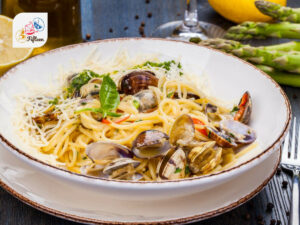
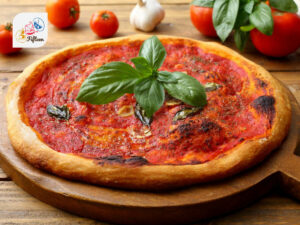


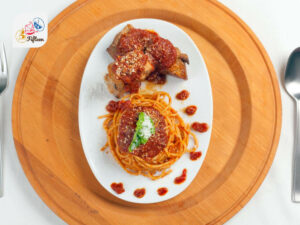
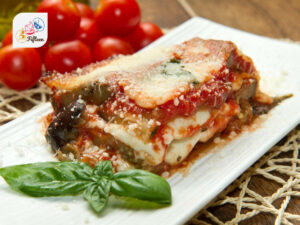
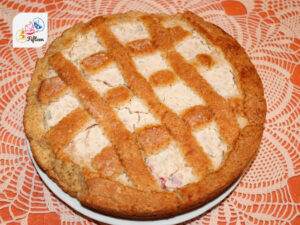
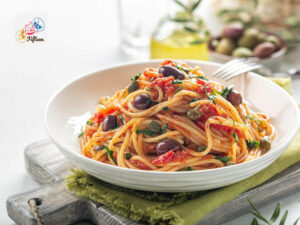
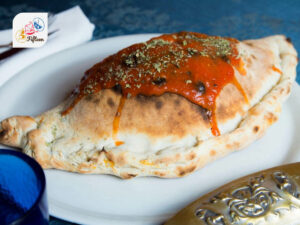


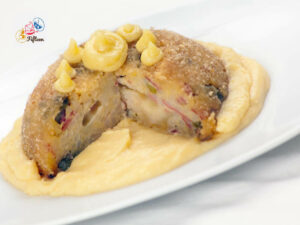
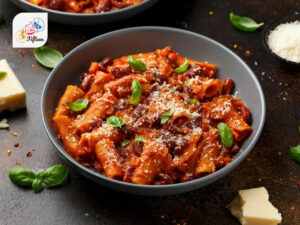


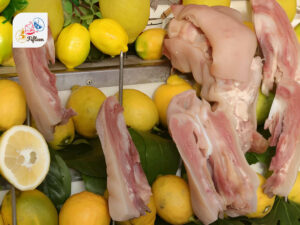
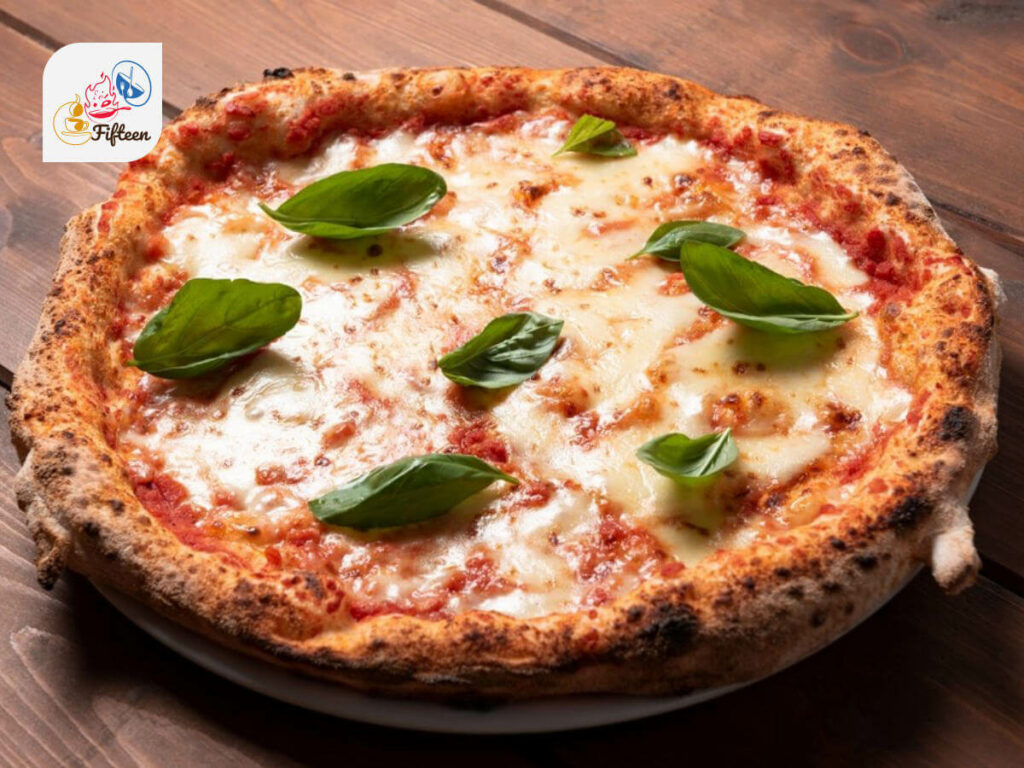


Jamie Scott
Editor in Chief, Senior Content Writer
Expertise
Home Cooking, Meal Planning, Recipe Development, Baking and Pastry, Food Editor, Cooking-video Maker, Western Food Evaluation Expert
Education
Le Cordon Bleu College of Culinary Arts
Local Community College, New York, NY
Jamie Scott is a skilled culinary expert and content creator specializing in Western cuisine. With over 15 years in the culinary field and formal training from Le Cordon Bleu, Paris, Jamie deeply understands how to blend nutrition with delicious flavors. His passion for cooking matches his commitment to making healthy eating accessible and enjoyable.
On Fifteen.net, Jamie brings a fresh perspective to classic dishes and beverages, offering readers insightful recipes, cooking tips, and a fresh view on meal planning that emphasizes taste, health, and simplicity.